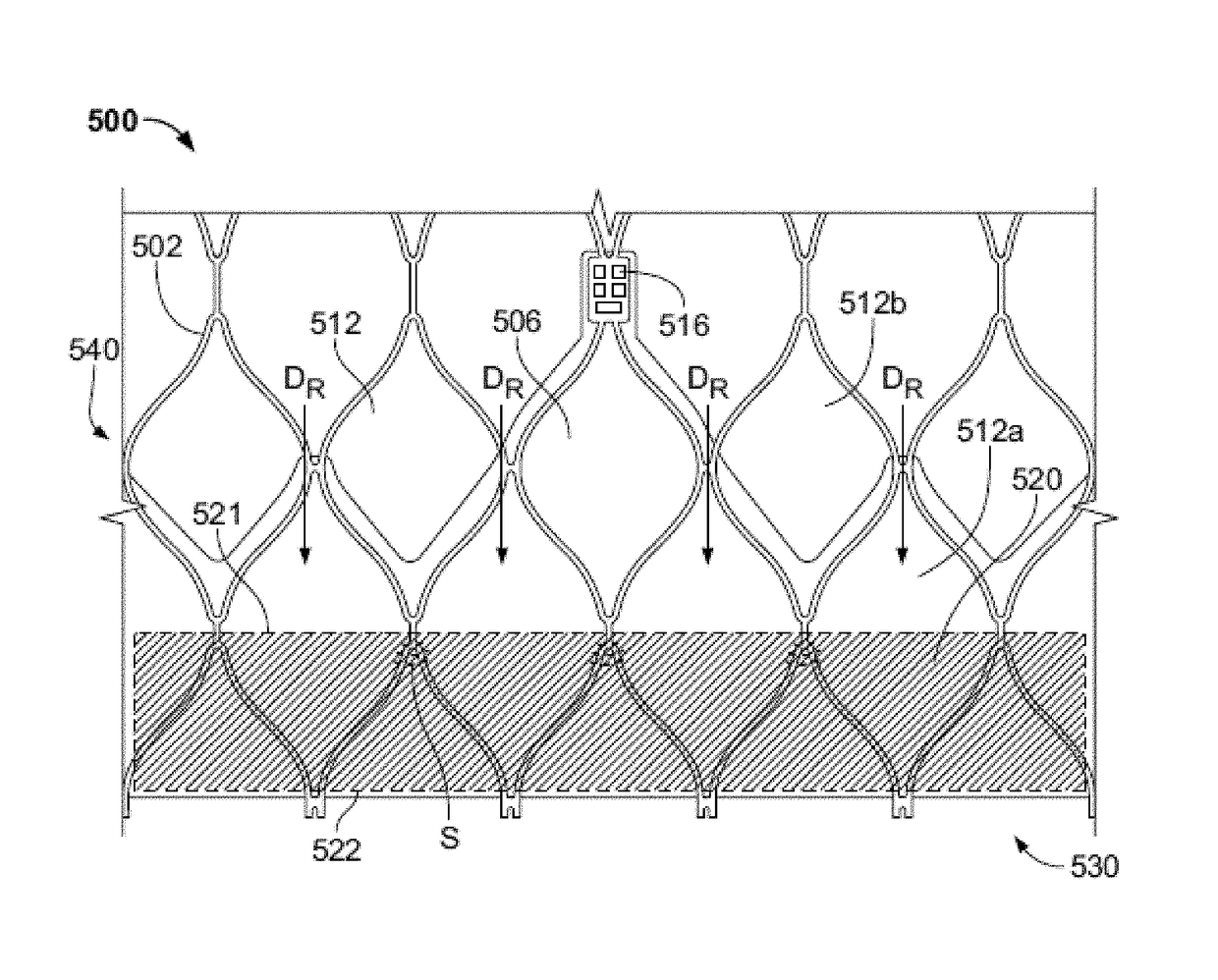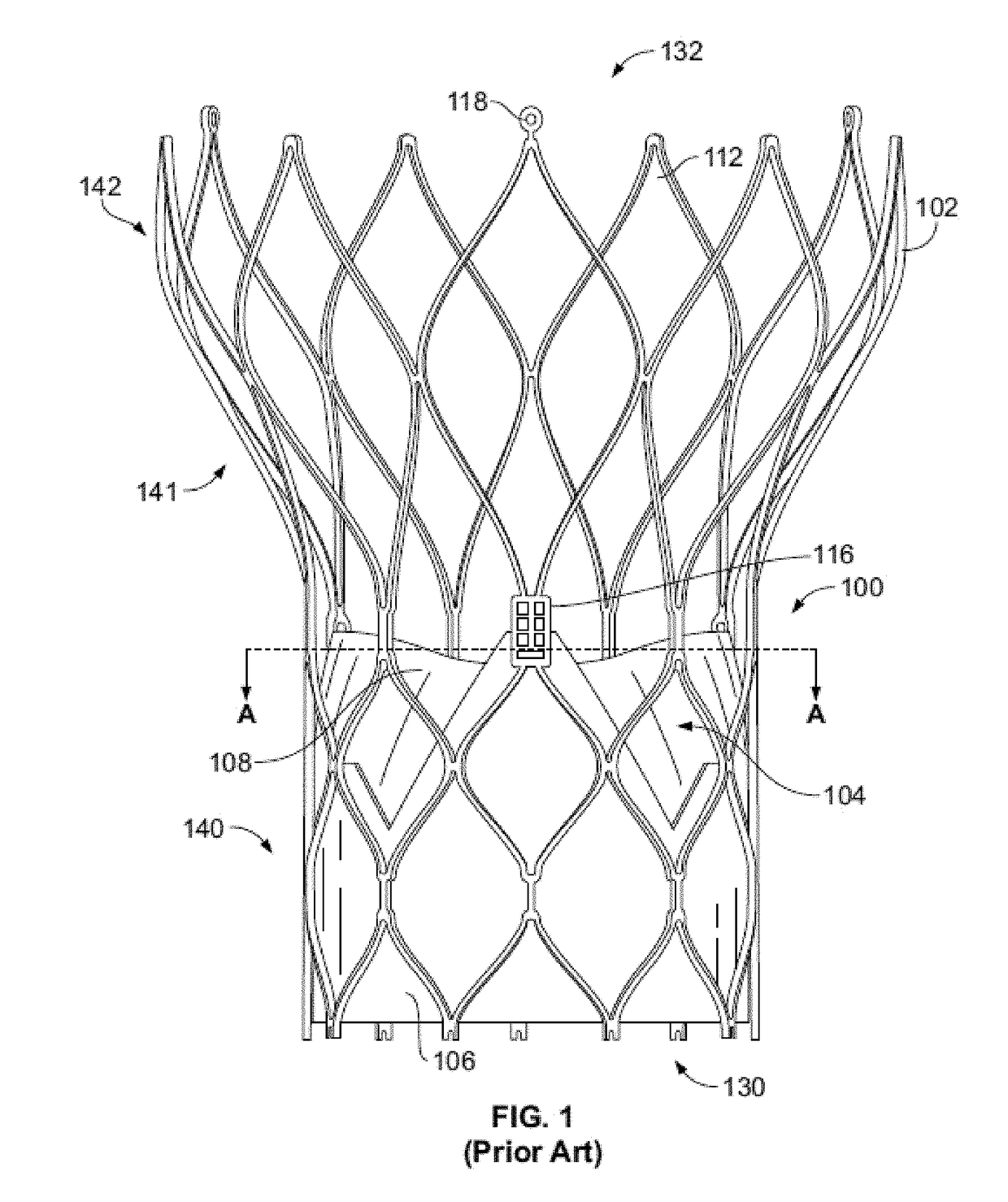Paravalvular leak sealing mechanism
a technology of paravalvular valve and sealing mechanism, which is applied in the field of paravalvular leak sealing mechanism, can solve the problems of reducing cardiac efficiency, affecting performance, and putting a greater strain on the heart muscle, and achieves the effect of improving sealing and facilitating sealing against paravalvular leakag
- Summary
- Abstract
- Description
- Claims
- Application Information
AI Technical Summary
Benefits of technology
Problems solved by technology
Method used
Image
Examples
Embodiment Construction
[0029]As used herein, the term “proximal,” when used in connection with a prosthetic heart valve, refers to the end of the heart valve closest to the heart when the heart valve is implanted in a patient, whereas the term “distal,” when used in connection with a prosthetic heart valve, refers to the end of the heart valve farthest from the heart when the heart valve is implanted in a patient. The term “circumferential,” when used in connection with a prosthetic heart valve, refers to the direction around the perimeter of the valve. Also, when used herein, the words “generally” and “substantially” are intended to mean that slight variations from absolute are included within the scope of the structure or process recited.
[0030]FIG. 1 shows a collapsible stent-supported prosthetic heart valve 100 known in the art. The prosthetic heart valve 100 is designed to replace the function of a native tricuspid, bicuspid or unicuspid valve of a patient, such as a native aortic valve. It should be ...
PUM
 Login to View More
Login to View More Abstract
Description
Claims
Application Information
 Login to View More
Login to View More - R&D
- Intellectual Property
- Life Sciences
- Materials
- Tech Scout
- Unparalleled Data Quality
- Higher Quality Content
- 60% Fewer Hallucinations
Browse by: Latest US Patents, China's latest patents, Technical Efficacy Thesaurus, Application Domain, Technology Topic, Popular Technical Reports.
© 2025 PatSnap. All rights reserved.Legal|Privacy policy|Modern Slavery Act Transparency Statement|Sitemap|About US| Contact US: help@patsnap.com



